
Meganomiinae is a subfamily of melittid bees, with 10 species in four genera, found only in Africa, primarily in xeric habitats, with the distributional limits in Yemen and Madagascar. They are rather different in appearance from the other groups of past/present melittids, being large bees (10–22 mm), mostly black with strong yellow markings, resembling anthidiine megachilids. Males of this subfamily are known to have hidden sterna.

Melitta is a genus of bees in the family Melittidae. It includes about 40 species restricted to Africa and the northern temperate zone. Most of the species are Palaearctic, though three rare species occur in North America.

Melittidae is a small bee family, with over 200 described species in three subfamilies. The family has a limited distribution, with all described species restricted to Africa and the northern temperate zone.
Ceratina cobaltina, the cobalt ceratina, is a species of carpenter bee in the family Apidae. It is found in Central America.
Mexalictus is a genus of sweat bees in the family Halictidae. There are more than 20 described species in Mexalictus.

Hoplitis is a genus of bees in the family Megachilidae. There are more than 380 described species in Hoplitis.
Hesperapis rufipes, the hugelia evening bee, is a species of hairy-footed bee in the family Melittidae. It is found in North America.
Macrotera texana, the Texas macrotera, is a species of bee in the family Andrenidae. It is found in Central America and North America.
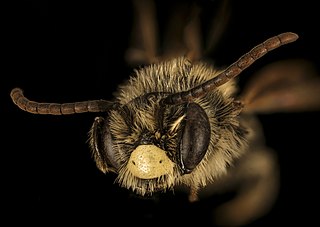
The short-tongued miner bee is a species of miner bee in the family Andrenidae. It is found in North America.
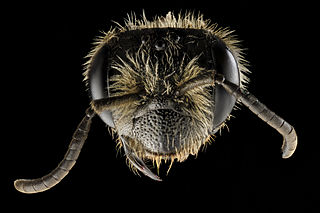
The wrinkled miner bee is a species of miner bee in the family Andrenidae. Another common name for this species is the rugose andrena. It is found in North America.
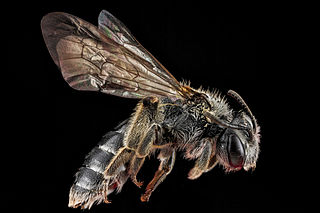
The Virginia miner bee is a species of miner bee in the family Andrenidae. Another common name for this species is the Virginia andrena. It is found in North America.
Calliopsis filiorum is a species of bee in the family Andrenidae. It is found in North America.
Andrena prima is a species of mining bee in the family Andrenidae. It is found in North America.
The Canada miner bee is a species of miner bee in the family Andrenidae. Another common name for this species is the Canada andrena. It is found in North America.
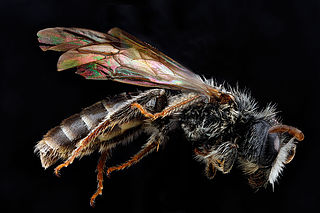
The fragile miner bee is a species of miner bee in the family Andrenidae. Another common name for the species is the fragile dogwood andrena. It is found in North America.
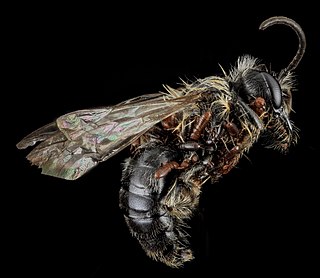
The Carlinville miner bee is a species of miner bee in the family Andrenidae. Another common name for this species is Carlin's miner. It is found in North America.

Macrotera latior is a species of bee in the family Andrenidae. It is found in Central America and North America.
Hesperapis oraria, known generally as the gulf coast evening bee or gulf coast solitary bee, is a rare species of bee in the family Melittidae. It was first described in 1997. The bee's current known range is on the barrier islands and coastal mainland secondary dunes on the Gulf Coast of the United States in Florida, Alabama, and Mississippi. The Gulf Coast solitary bee is the only known member of its subfamily in the eastern United States, and it is a monolege of the coastal plain honeycomb head.
Protodufourea eickworti is a species of sweat bee in the family Halictidae. It is found in North America.
Protodufourea is a genus of sweat bees in the family Halictidae. There are about five described species in Protodufourea.










